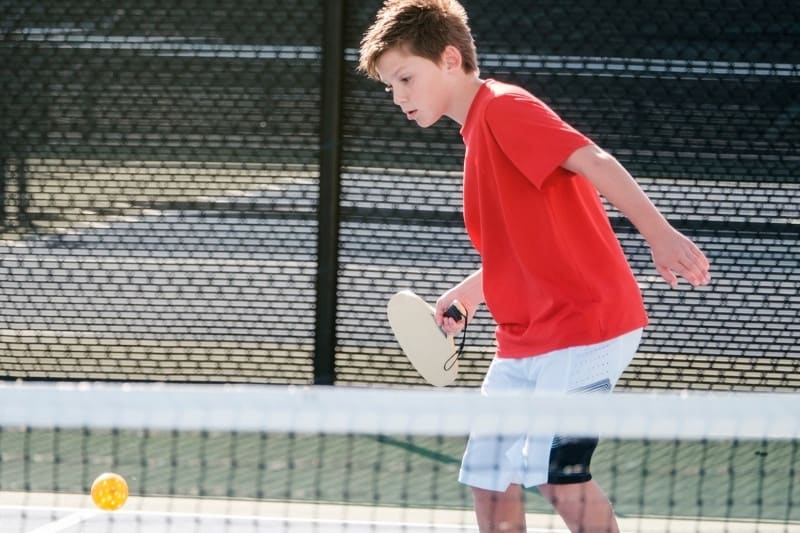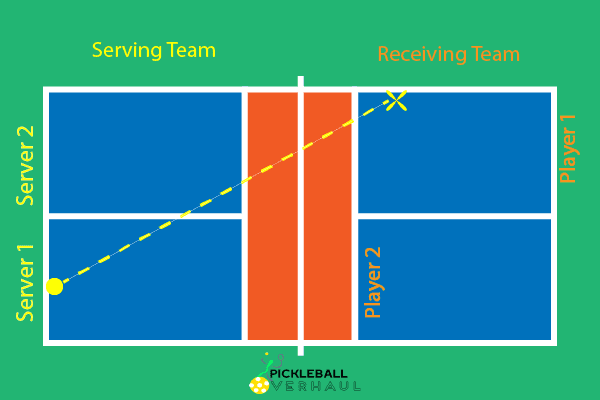
One of the best ways to win points in pickleball is right off of the service before giving your opponents any chances for other shots. The best serve for pickleball is one that your opponents should not be used to. So if you only have one type of service in your arsenal, here are more you should consider adding.
The Best Serve For Pickleball
Before we get started, make sure that the service rules are followed with each service. That means you must contact the ball with your paddle below your waist. You should also be swinging up with your paddle instead of high to low. And make sure that the highest point of your paddle is not above your wrist.
With that out of the way, here are some of the best serves for pickleball.
The Deep Power Serve
The best serve for pickleball generally is a strong serve with pace, deep in your opponent’s backhand. This is because most people have a weaker backhand than their forehand. Combined with a deep serve, this can cause a weak return that you or your partner can take advantage of in your third shot.
You can apply topspin by brushing the ball with a low-to-high motion with your paddle. This keeps the ball low with a low bounce. It also lands “drops” even if the ball sometimes looks like it will sail outside the lines. Aim for your opponent’s outside foot (left feet if they’re right-handed, right feet if they’re left-handed).
The Lob Serve
If your opponent has no trouble returning those hard, topspin serves, switch it up and try a lob serve. A high lob serves with very little pace can throw some players off. You may be surprised that you may get a weak, high return or a return into the net.
A lob serve is not as commonly used or practiced in rec play. Use that to your advantage to mix your serve-up. Even if you don’t have a variety in your service, a lob serve is one that you can use without much practice.
The Short-Angled Serve
One of the best serves for pickleball is an angled serve with a pace that forces your opponent to run up and out wide for a return. See this illustration below as an example.

If Player 1 is left-handed, it is even better because you’re forcing them to use their backhand. If they don’t have a backhand or a weak backhand, they would have to run out even wider to return with their forehand.
Similarly, if the receiver is right-handed, you would step closer to the center line and aim for the corner of the court that is at their left. If your angled serve does not have pace, it will give your opponent plenty of time to make a return. So make sure that you’re adding pace to make the ball harder to return.
The Spin Serve – A Serve Of The Past
The spin serve was a powerful serve you could learn and use in the past. However, it is no longer allowed, whether it is the chainsaw serve or finger spin version. The finger spin allows the server to create rotation on the ball before hitting the ball with its paddle. This causes the ball to either kick left, right, or into the receiver after the ball bounces depending on the direction in which the rotation is applied.
The spin serve is arguably the hardest serve to return for most players. Unless the receiver is able to read the direction of the spin from the server’s hand, they will most likely be unable to predict the direction of the ball’s bounce.
More Pickleball Tips
The serve is one that is not often practiced or drilled enough. The great thing about working on your service is that you don’t even need a partner in order to practice. You can grab some targets and place them on the receiving court and hit a basket full of balls.
Read Next: The 3 Types Of Shots In Pickleball You Should NEVER Miss
Read Also: Key Tips To Play More Consistent Pickleball

